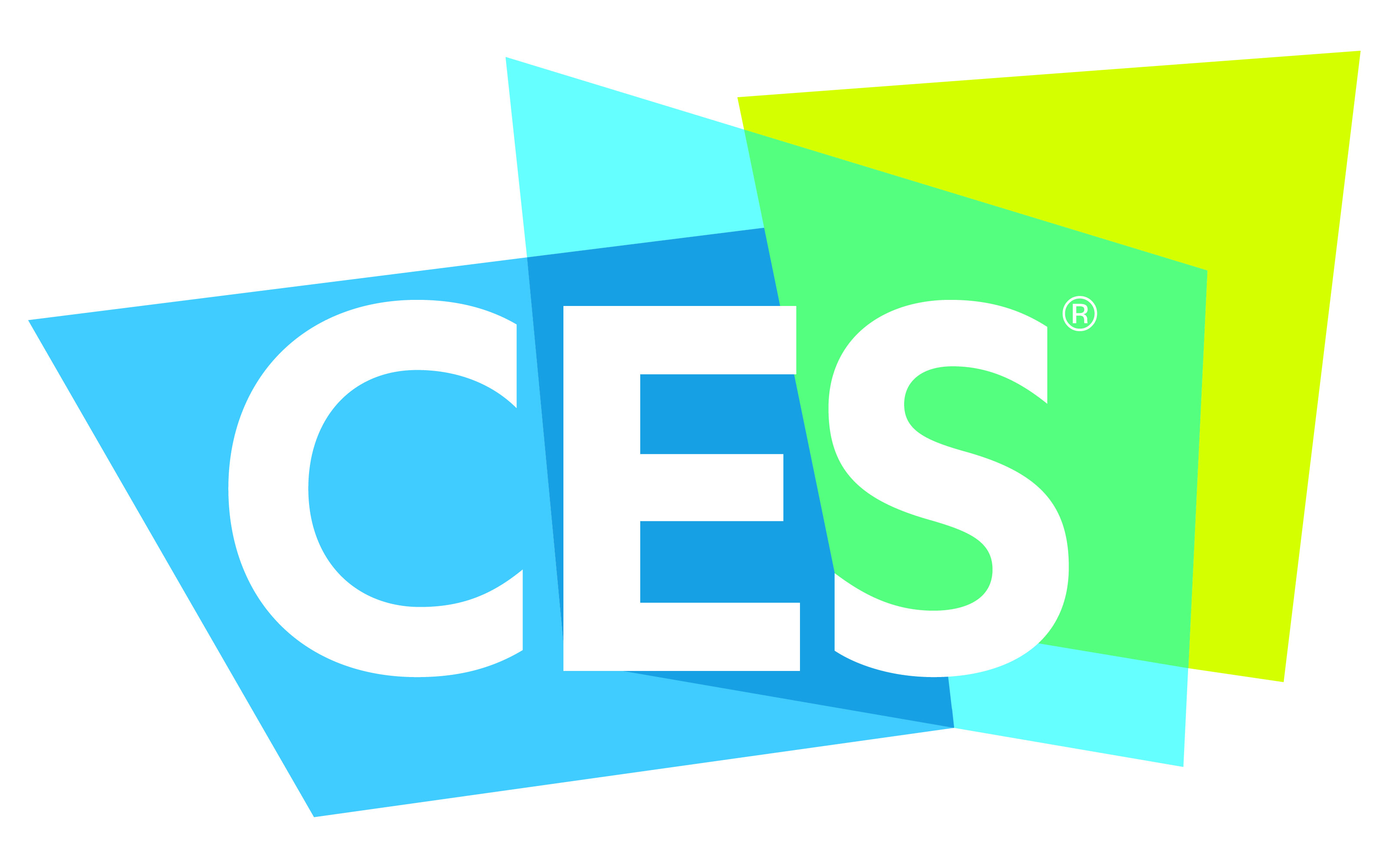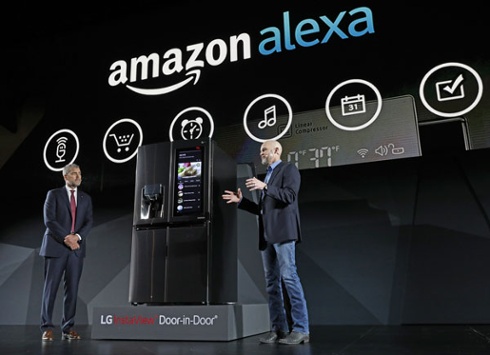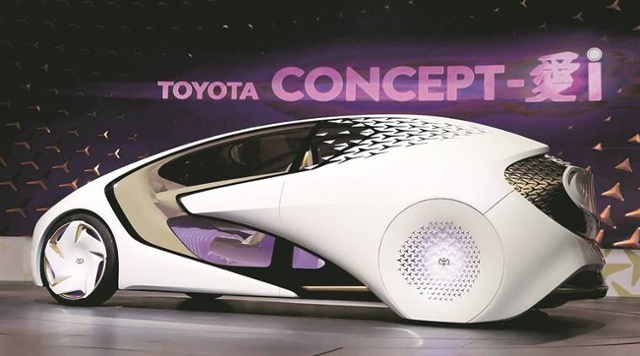This past week marked the 50th anniversary of CES – the Consumer Electronics Show. It’s the hottest event for consumer technology and electronics. As electronics become more connected, we are paying attention to what’s next and how these new innovations will impact the future of our industry.
In the spotlight? Self-driving cars, virtual personal assistants, smart home gadgets, wearables, drones and augmented reality devices. And in all of these technologies, personalization and artificial intelligence (AI) is fueling product innovation.

Source: Imagination Technology
Personalization was the hottest word in 2016 for those of us in marketing or product development. Advances in technology have made it easy to quickly gather data that gives us a better understanding of consumer behavior and then take action to create deeper engagement. Now, technologists and consumer product brands are racing full throttle to produce the most innovative, breakthrough technology that will capture mainstream consumer audiences’ attention. And that’s where CES comes in. This show is the premier event for consumer tech companies looking to make a splash, as well as B2B tech companies looking to enable brands with their bleeding edge enterprise solutions.
Personal Assistants Dominate CES
Voice-activated AI has gained popularity as we no longer think twice about asking Siri to complete tasks that we would have previously performed ourselves. Connected, voice-enabled devices have become ubiquitous, and most Americans believe that using voice control creates a more intuitive user experience (UX). The next obvious evolution of that experience is the personal home assistant. Industry experts predict more than 40 million homes will have a home assistant by 2021.
Amazon’s industry-leading Alexa is now a household name. The Alexa-enabled Echo has sold more than 5 million units since 2015. Alexa helps perform tasks like playing music, answering questions and controlling smart devices and works with more than 6,000 applications. Google jumped into the home assistant space on November 4, 2016, with the launch of Google Home. Holiday sales fueled the purchase of the new home assistant, which saw a 400% spike in growth in both usage and adoption from December 24 to 26 according to Forbes writer John Koetsier. Last April, Samsung announced it would begin producing its own version, Otto.
Despite the buzz about Google Home, this year, Alexa was heralded as CES’s breakout star. Forbes contributor Jim McGregor writes, “2017 CES is the emergence of Amazon’s Alexa as the leading artificial intelligence (AI) natural language processing platform.” Countless new products announced Alexa integrations, making it quite possible that once these products hit the mainstream market later in the year, anyone could manage their entire home with Alexa. Amazon announced a partnership with Whirlpool at CES, which will now offer voice command of many of the brand’s washers, dryers, ovens and refrigerators. By aggressively courting third-party developers, Alexa has cemented its first-to-market dominance.

Source: Brandchannel
Other tech leaders are entering the home assistant fray. Lenovo launched its Smart Assistant at CES this year, along with Bosch’s robot Kuri. Facebook demoed its own personal assistant technology, though the company insists it is not yet entering the market. Still, Facebook is integrating more bots with Messenger’s AI-assistant. Meanwhile we know Apple is working on its own Siri-powered home assistant and prepping an SDK for third-party use. We will have to wait for WWDC or the next Apple announcement to learn more about the tech giant’s plans.
Whether or not home assistants will be profitable has yet to be determined as hardware often comes with low profit margins. Whichever company controls the most flow of information is likely to be the winner, and for now, Amazon’s Alexa is clearly in the lead.
Smart Home Technology is Powering the Internet of Things
Aside from the personal home assistant, home automation technology, which has been around for several years, already enjoys wide adoption. In 2016, more than 30 million people were expected to purchase a smart home device controlling anything from thermostats and appliances to home security. CES’s producer, the Consumer Technology Association, put out a report last week saying that it expects to see a 63% increase in connected product sales in 2017. We are becoming more comfortable with the idea of having smart home products that talk to and learn from us and each other.
In fact, the Consumer Technology Association (CTA), which puts on the show, released a new report on the eve of CES saying that smart home technology is what is driving the Internet of Things revolution. CTA also predicted sales of 29 million units in 2017, a 63% percent increase over 2016.
According to Verge writer Jacob Kastrenakes, the smart home industry story has evolved beyond how easy and affordable it is to enable a connected home to how more and more of our connected devices can actually communicate with each other. It’s not enough that our devices can talk to the Internet; if electronics manufacturers want to see smart home adoption reach critical mass, these devices need to talk to each other as well.
While many connected devices seem like little more than shiny objects, if something proves useful, it’s far more likely to succeed with mainstream consumer audiences. And it’s getting far easier for developers to build software and hardware that fits seamlessly into the Internet of Things ecosystem, which is driving the cost of these products down.
Related: Rheem Manufacturing enhances the smart home by integrating with Nest
I appreciate that the cost of connectivity is trending down. I’m not ever going to buy a $2,500 refrigerator. But a $150 FridgeCam that does all the work of a smart fridge without the price? That’s interesting to me. I can try out the use case at a low entry price instead of spending a lot of money to perhaps later realize a smart refrigerator doesn’t add enough value to my life to warrant the price tag.
Adoption, privacy and data protection have finally become paramount in the consumer mind. Though we continue to use new devices and technologies that collect data from us, we are more concerned with how safe we are from malicious attacks. Device manufacturers are all focused on how they can better protect our data – while in transit or at rest. On our blog last week, we talked about Google’s play to make the Internet of Things more secure with the launch of Android Things, an OS to power smart devices and the Internet of Things.
At CES, Norton also announced a new router to help achieve the same goal. The Norton Core, a round device that looks like a discoball, is a “mobile-enabled WiFi router that touts machine learning and Symantec’s threat intelligence smarts to defend your home network from getting those digital nasties in the first place,” according to Nicole Lee of Engadget.
Norton hopes the router will protect smart devices from unsafe web traffic using secure DNS, data encryption and automatic security updates. Users can control the Norton Core from an app on their phone that provides a dashboard of connected devices, blocked threats, potential vulnerabilities and a “Security Score.” The app also lets you restrict access for certain users – like children – ensuring they only get so much Internet time.
Self-Driving Cars May or May Not Be the Future, but AI and UX are Driving

Source: Cars.com
The jury is still out on what the future of self-driving cars holds. Self-driving cars may create safer roads and solve much of our traffic congestion problems. They also promise to give consumers back time spent commuting for use on more valuable activities. While the technology is intriguing and a subset of the population is on board, mainstream consumers are not ready to give up their autonomy and trust a computer to fully take over ability to pilot their own vehicles.
In the meantime, the connected car market continues to mature and evolve. Like in other industries, personalization drives innovation. With so many life-enhancing tools made available through smartphone technology, mainstream consumers have begun to expect the same from their cars. Navigation, traffic information, weather information, parking availability – these are just some of the tools that make for a better driving experience.
But we still have to tell a program what we are looking for. For most of us, our cars are not equipped with personal assistants or artificial intelligence (AI) technology. But newly designed and manufactured cars are moving in that direction, learning where we drive or how far we drive on a regular basis, how much fuel we consume, what our preferred routes are, etc. The industry competition for our dollars is bigger than ever and brands are betting on user experiences to win market share.
Every major car brand at CES showcased their latest innovations. The Toyota Concept-i, anticipated to be ready for mainstream consumption by 2030, is designed for the car owner who enjoys the driving experience. “Our vision for the future is that driving is still fun,” says Ian Cartabiano, studio chief designer. The Concept-i comes with Yui, Toyota’s own personal assistant.
Panasonic introduced a concept for a driverless car that features swiveling luxury seats and 4k tablets. I guess the assumption is that if you are freed up from having to pay attention to the road, you want to spend that valuable time looking at a tablet instead of talking to your fellow passengers.
Google announced a partnership with Hyundai Motor Co. that will let drivers talk to the Home speaker to control some car functions.
Chrysler introduced some incredible features with the announcement of its Portal Minivan. In hopes of attracting Millennials, the Portal is packed with facial recognition software that tailors the experience to whoever is riding at the time. It also integrates voice biometrics, a community display that lets passengers control music, videos and more.
Microsoft reiterated last year’s stance that it will not enter the smart car space and instead will continue to focus its efforts on its Connected Vehicle cloud services platform and Cortana personal assistant aimed at helping manufacturers like BMW and Renault-Nissan integrate personalized connected services.
Take a look inside BMW’s innovation:
Video Credit: Austin Evans
Wearables, Drones and Augmented Reality
For many of us in the mobile industry, we’ve asked, “Now that the smartphone is something we take for granted, what’s next?” Though wearables have yet to reach critical mass outside of the fitness category, manufacturers are hopeful to see wider adoption in the coming years. Analysts believe that successful market penetration means wearables are in 30-40% of homes. Fitbit continues to rule the category, but other companies are mixing it up with new features. For instance, Suunto became the first fitness watch to feature an optical heart rate tracker.
Several non-wrist wearables caught my interest. The SmartCane uses AI to detect usage patterns and can determine if something is wrong. Helios Smart Ring measures sun exposure and vitamin D levels. Ars Technica named Notch’s six-pack of 3D motion sensors the best wearable of the show. The sensors are worn at various places on the body to give users a complete view of their fitness efforts. Because the company released an SDK and native app to go with the sensors, third-parties can now use the technology in their own products. And perhaps one of the most useful products announced at CES is Bloomlife, a stick-on tracker for pregnant women. According to Wareable, “the sensor times contractions and measures changes in expecting mothers’ patterns over the third trimester.”
Ever since the Federal Aviation Administration’s move last year to allow commercial use of drones for overhead inspection purposes, manufacturers have been vying for industry leadership. At CES, several big announcements were made including DJI’s acquisition of a majority stake in camera manufacturer Hasselblad, makers of cameras that American astronauts took with them into space. Industrial use cases were debuted, showcasing drones’ capabilities to enhance workplace operations. And various entertainment use cases also debuted, ensuring the broader consumer market could also benefit from fun, new technology.
Virtual Reality wasn’t as hyped up as in CES’s past, but a lot of the buzz was around virtual adult entertainment and haptic integration with smart toys. More attention was given to Augmented Reality – its commercial and industrial applications and how enterprise use cases are fueling its journey toward mainstream awareness and adoption. Expect larger category announcements to come directly from brands in big product announcements later this year.
Conclusion
“I believe that at the end of the century the use of words and general educated opinion will have altered so much that one will be able to speak of machines thinking without expecting to be contradicted.” ― Alan Turing
If you had any doubt before that home automation would reach mass consumption, CES this year settled the matter. Smart home technology is in millions of homes across America and is expected to increase significantly in the next few years.
Personalization and machine learning are nascent tools allowing us to create deeper affinity with products designed to enhance people’s lives with entertainment and value. As AI from Google, Amazon and others improves and is more easily integrated with third-party products, we will continue to see more refined user experiences and better connected products.
So if 2016 was the year where we used data to create a more personalized experience, 2017 will be the year we fully leverage artificial intelligence and machine learning to anticipate user needs before the user even has time to anticipate them.
For a full list of products debuted at CES, visit Android Headlines.
